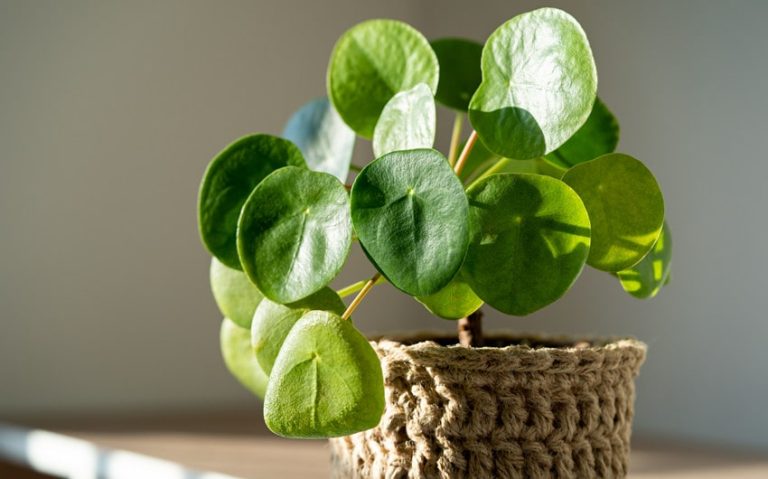How to Care for Peonies: Five Professional Tips
As you think of ways to uplift the appearance of your lawn and backyard flower garden, don’t forget to include some peonies. These decorative plants feature several layers of huge petals, lively hues, and pleasant scents that will turn your flower garden into an exciting orchard with heavenly colors. You just need to learn how to care for peonies in your garden.
What Are Peonies?

Image source: Pinterest
Also known as paeony, a peony is a blossoming plant that belongs to the genus Paeonia, which is the only kind in the Paeoniaceae family. This decorative plant is native to the Asian, European, and North American (West) regions.
There are many species of peonies but there’s a disagreement among scientists regarding the number of distinguishable species of peonies. Some say there are 25 species while others put the number at 40. Whatever the number of species available, it’s clear that this is a popular flowering plant.
However, there seems to be a consensus among scientists that 33 peony species have been confirmed, so far, in the world. However, they also agree that there is a need to carry out more studies on these species to establish the relationships between these species and classify them further.
Most species of this plant are herbaceous perennial plants that grow between 0.25 inches and 1 meter tall. However, some species are somewhat woody with bushes that grow between 0.25 inches and 3.5 meters tall.
Most of these species have multifarious, profoundly lobed leaves and bulky, often aromatic flowers. Their flowers come in a wide range of colors, including purple, red, pink, yellow, white, and velvet. Peonies usually bloom in late spring and early summer.
Unfortunately, the blooms have a short lifespan of between 7 to 10 days. These flowering plants are commonly found in flower gardens, especially in areas with moderate climates.
They’re also grown for commercial purposes where they’re traded as cut flowers in large-scale flower markets. Some farmers grow these flowers for export purposes. However, they’re generally available in the summer and late spring seasons.
As deciduous shrubs, peonies have thick and thin roots. The thin roots are meant to help the plant gather minerals and water, while the thick roots are meant to serve as the plant’s storage of food and drinks.
Some species of this plant are tufted, which causes their crowns to produce adventitious buds. Other species produce stolons. Furthermore, their compound leaves don’t have stipules and glands. But they feature an anomocytic stomata.
The woody species generate new growth from their scaly buds. These buds can come from the old flush or crown of their rootstocks. Bisexual flowers appear as single flowers at the end of the plant’s stem.
Very few blooms appear in the plant’s axils of its leaves. One unique thing about this flowering plant is the fact that its blooms close at night and in cloudy skies. Furthermore, each of its flowers is delimited by several bracts.
These bracts can form an involucre with 3 to 7 hard free sepals and usually 5 to 8 free petals. However, these classes are intergrading, which makes it difficult to assign all of them. Furthermore, the number of parts in a peony can vary.
Inside the plant, there are close to 160 stamens with anthers at the base. These anthers, whose shape resembles a sagittate, are attached to filaments. They open with longitudinal splits on the outer side.
5 Tips on How to Take Care of Peonies

Image source: Pinterest
1. Plant Your Peonies Correctly
Taking care of your peonies starts at the point where you plant them in your garden. You have to choose the right place to plant your peonies. Plant your peonies in a place where they can access sufficient light.
Peonies require 6 to 8 hours of exposure to sunlight. This supports the production of a profusion of blooms. However, your peonies can still thrive in places where they only access the morning and afternoon sunlight.
Nevertheless, peonies do not bloom in shades. Also, plant them in a well-drained and neutral soil. Furthermore, ensure that the peonies won’t have to compete with other tree roots. This also means that you shouldn’t crowd your peonies in the garden.
Since peonies cover approximately 3 feet in diameter, you should space them according to avoid crowding, which might affect their blooming. The good thing is that these plants can survive for many years if they’re undisturbed.
You also need to consider the planting depth. Don’t plant your peonies too deep because they might not bloom. When planting your peonies, avoid disturbing their root balls and feeder roots.
Newly planted peonies will take up to three years to produce their first bloom. Once they mature, they’ll produce up to 50 flowers every year for a generation of gorgeous blooms.
2. Supporting Your Peonies
Like other plants, peonies need to be supported continuously to ensure they survive for many years. They produce large and bulky flowers that can easily cause the stems and weak branches to break.
Luckily, you can use peony rings to support your plants. If you don’t have these rings, you can use wire tomato cages. Supporting your peonies before spring is important to avoid piercing their crowns accidentally with the rings.
Although the new hybrids have stronger stems, you shouldn’t assume that they’ll withstand the excess weight of blooms. Always err on the side of caution by supporting your peonies before they bloom. The good thing is that the plants will grow through the supporting rings and eventually conceal them.
3. Pruning Your Peonies
Peonies need to be pruned when they’re done flowering. Their petals will turn brown creating an unpleasant sight. So, you should cut the browning petals and the stems underneath them. This will free up the foliage.
However, it would help if you didn’t cut back the foliage before the fall because it can encourage hibernating of pests.
4. Mulching Your Peonies
New peonies need mulching. You can do so with evergreen branches or salt marsh grass once the ground has frozen. When you’re mulching your peonies, ensure there’s enough air circulation to avoid the problem of “botrytis.”
This is a serious fungal infection that can be prevented by allowing your peonies to access fresh air consistently. You can when your peonies have botrytis if their buds and stems start to turn black.
When this occurs, remove the affected stems and buds and dispose them of properly. Don’t throw them in your composite pile because the pile might transfer the fungi to new plants. Instead, burn them completely or throw them in your trash.
You can also avoid the spread of this disease in your garden by spacing your peonies. Another common disease is powdery mildew, which mainly occurs in late summer. However, this shouldn’t bother you so much because this disease is normally harmless.
You can also prevent it by allowing free circulation of air in your peony garden.
5. Provide Your Peonies with the Right Climate
Peonies require plenty of sunlight and a dense winter freeze to store enough energy in their storage roots. This energy is necessary for producing buds in readiness for the spring when the plants bloom.
So, if you live in warm areas like South California and Florida, you may not have the best experience with peonies. Your peonies also require enough nutrients. You can supply them with the necessary minerals by applying a mixture of composite and fertilizer to their bases every year, especially after blooming.



